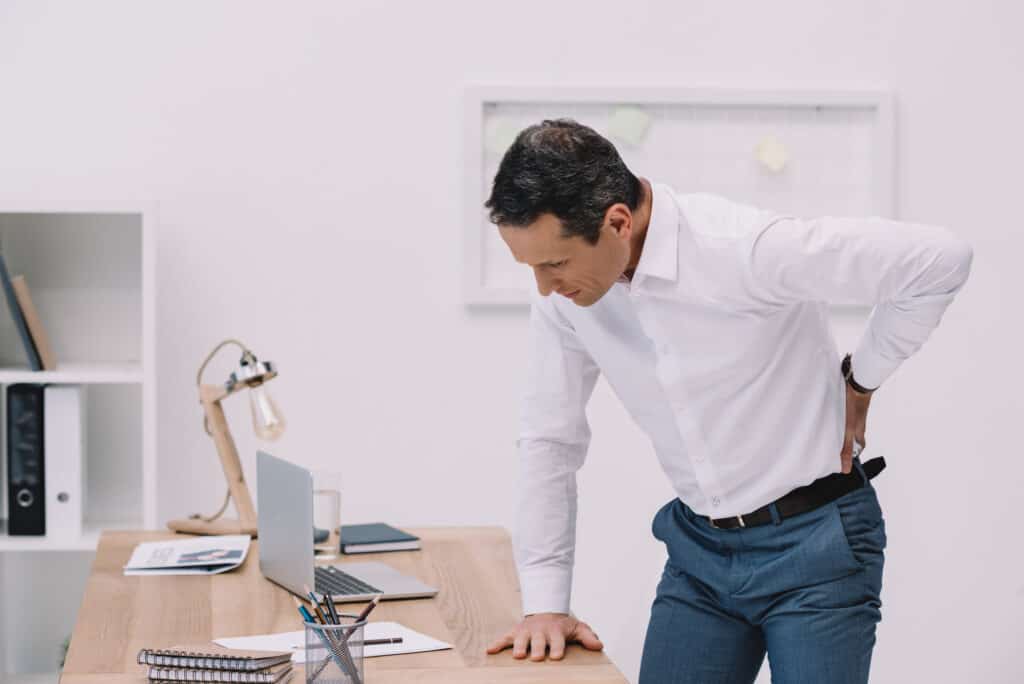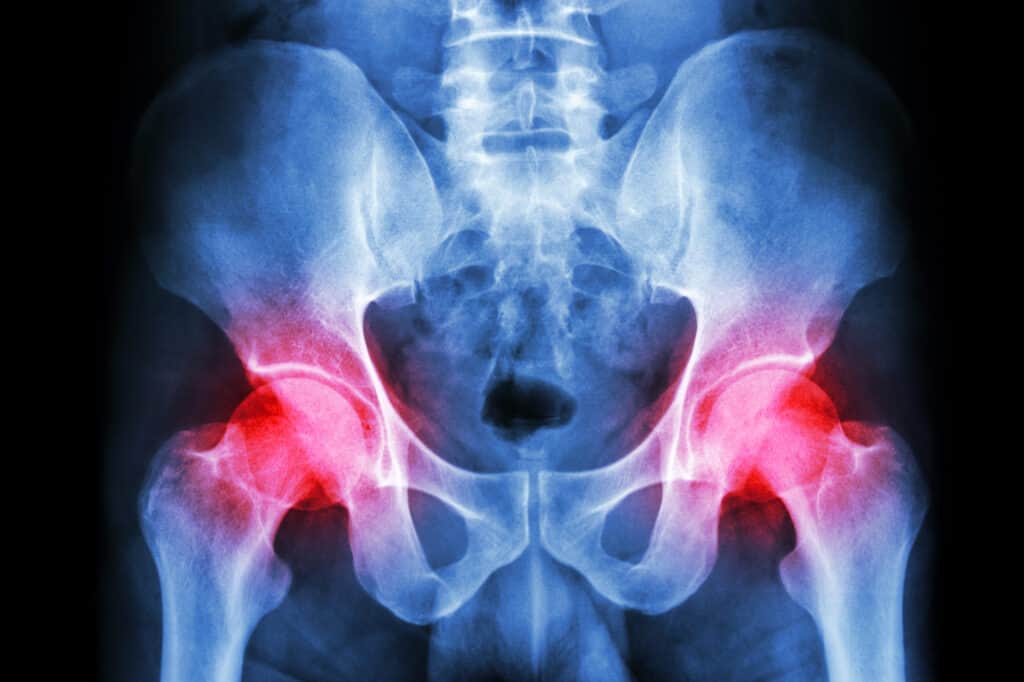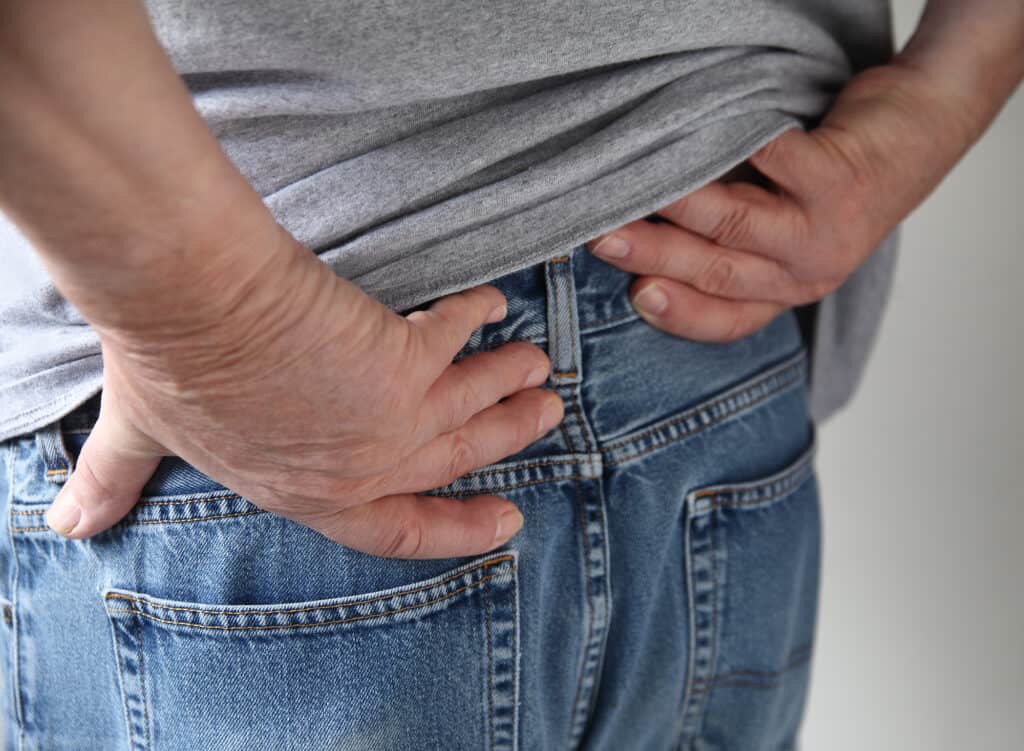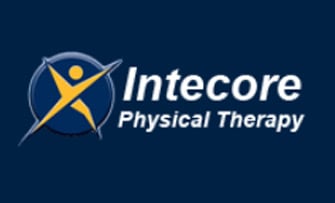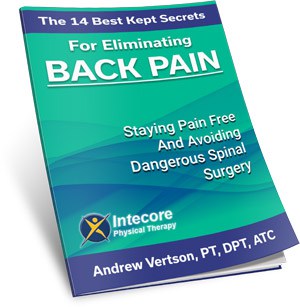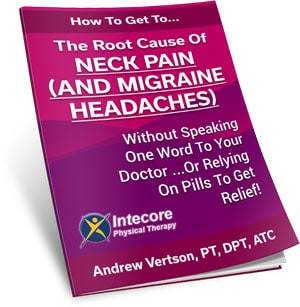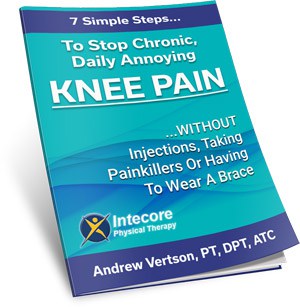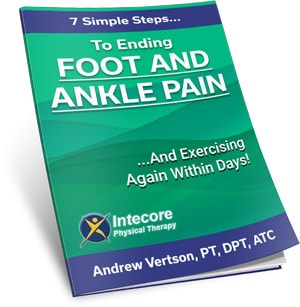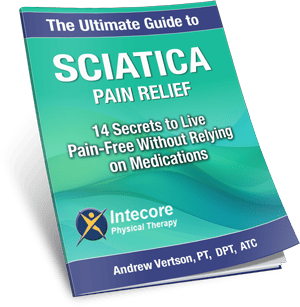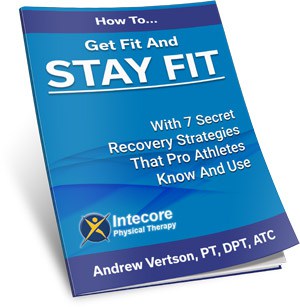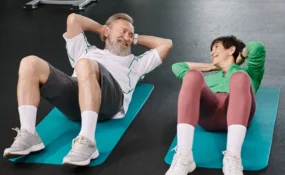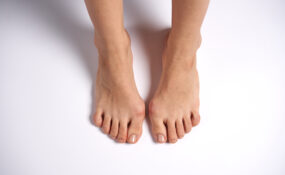Do you suffer from hip pain?
Have you noticed changes in your hips when walking, running, or even sitting?
Many people do, especially as we age, and our bodies change. It can be challenging to manage – not to mention downright annoying. Exercise is usually recommended for people with hip pain. It can increase strength, mobility, and hip flexibility and improve your range of motion. But do you ever feel like it might be worsening your condition?
In this blog post, we explain why exercising can worsen hip pain and share tips on keeping yourself safe while getting the exercise your mind and body need.
More Blogs From Intecore
Can High-Intensity Workouts Be Good For Overall Health?
How Can I Improve My Posture During Everyday Activities?
Shoulder Injuries That You Should Be Aware Of
What Causes Hip Pain?
Hip pain can be hard to pinpoint, but understanding the anatomy of the hip may help you identify the source of your discomfort. The hip joint is a ball-and-socket joint that connects the thigh bone to the pelvis. It is one of the largest joints in the body, allowing for a wide range of motion.
Surrounding the hip joint are muscles, tendons, and ligaments supporting and stabilizing the joint during movement. By understanding these structures in the hip joint, you and your physical therapist can determine the cause and work towards finding a solution to your hip pain.
Hip pain has many potential causes, from arthritis to bursitis to a strained muscle. The most common ones we see are:
- Strained muscles and ligaments from overuse or trauma: Straining hip muscles and ligaments can happen from overuse or an unexpected injury. Pain and discomfort can range from dull aches to intense agony. When experiencing these symptoms, carrying out your daily activities, even walking, without feeling limited can be challenging. Rest and proper care can help heal, but recovery time can vary from person to person. Physical therapy may be necessary if the pain doesn’t resolve in about seven days. Listen to your body and give it the time and care it needs to recover fully.
- Osteoarthritis: is a joint condition that causes cartilage breakdown and affects millions of people worldwide. It’s a degenerative joint disease that causes cartilage breakdown, leading to pain, stiffness, and limited mobility. The disease can affect any joint, but it’s most commonly seen in the hips, knees, and hands. Osteoarthritis typically develops in older people but can also be caused by injury or genetics. Unfortunately, this disease has no cure, but physical therapy can help you manage the painful symptoms and slow their progression. It’s essential to have a good understanding of osteoarthritis, so you can take steps to manage it and improve your quality of life.
- Tendinitis is an inflammation of the tendons that connect bones and muscles. Tendinitis can be a debilitating condition for those who suffer from it. The inflammation of the tendons that connect our bones and muscles can cause pain and discomfort, making tasks that involve the affected area difficult to perform. The swelling and tenderness can be quite severe in some cases, whether it’s “Tennis Elbow,” “Golfer’s Knee,” or hip tendonitis. While rest and proper treatment are key to managing tendinitis, it’s important to prevent the condition from worsening by staying active, using proper form when exercising, and listening to your body.
- Bursitis: is an inflammation of fluid-filled sacs around the joints. Bursitis can be a real pain – both literally and figuratively. This condition is brought on by inflammation of small, fluid-filled sacs that cushion your joints. When the bursae around the hip joint(s) become inflamed, they can cause stiffness and aching to outright pain. Simple tasks – walking, lifting, or bending – can become difficult and uncomfortable for many people with hip bursitis. But don’t just grin and bear it – talk to a physical therapist.
- Fractures: caused by a direct impact or fall on the hip. Fractures on the hip can happen from a direct impact or fall. Although a very common injury, it can be painful and disruptive to your daily life. If you’ve fractured your hip, you may have difficulty walking or standing up alone, leading to further physical complications. That is why early diagnosis and treatment are crucial. The affected hip can heal and regain its strength with proper rehabilitation with the support of a physical therapist. While recovering from such an injury may seem daunting initially, it is important to remember that it is a temporary setback, and better days are ahead.
But whether your hip pain results from an injury or wear and tear, one thing is for sure – it’s no fun. The good news is that there are plenty of treatment options available to treat hip pain, from physical therapy to surgery (hopefully not), depending on your unique situation.
So, don’t worry. With the right diagnosis and treatment, you can return to feeling like your old self in no time.
How Exercise Can Make Hip Pain Worse
Many people believe that exercise is the cure-all for everything, and – of course – making exercise part of your routine is essential for a happy, healthy, pain-free life. But while physical activity can benefit many ailments, it’s not always the case regarding hip pain.
Why? Because certain types of exercise can make the pain worse. High-impact exercises like jumping up and down and running can put extra stress on the hip joint, exacerbating underlying issues.
We also recommend that you avoid weighted exercises and exercises that you do while standing. Instead, opt for exercising in the pool, sitting (chair yoga), or lying down (Pilates). But even exercises that are considered low impact, like cycling or water aerobics, can cause pain if not done correctly.
That’s why it’s important to be aware of the exercises that may worsen hip pain and work with a physical therapist to create a safe and effective exercise plan that won’t exacerbate your discomfort.
What Types of Exercises are Safe for Hip Pain Sufferers?
Dealing with hip pain can seriously impact your daily life. However, it doesn’t have to stop you from maintaining a healthy and active lifestyle. There are a variety of exercises that you can do that can help alleviate hip pain and improve your overall mobility. Low-impact activities like walking, swimming, and cycling can be a great place to start.
Yoga, Pilates, and stretching can relieve tension and increase flexibility. But when you have pain, it’s essential to talk to a physical therapist before starting any exercise regimen to get advice on the best exercises to avoid exacerbating your specific symptoms.
Practicing “proper form” while exercising is also essential to prevent further injury. When exercising, it’s important to focus on your alignment and positioning to reduce strain on your hip joints. Whether you’re doing squats, lunges, or even yoga poses, adjusting and perfecting your form can make a world of difference, which we can help you with.
Hip pain can limit mobility and make even the simplest tasks a real challenge in severe cases.
But staying positive and as active as possible is key. Focusing on what you can do instead of what you can’t is a great way to stay optimistic. Adjusting your lifestyle to accommodate your condition is also important. It may mean investing in a walking device to help balance or opting for lower-impact exercises like swimming or yoga.
What Now?
Whether you’re an athlete, weekend warrior, or sedentary, experiencing hip pain can be debilitating and irritating, but we hope that this post has provided you with the necessary information to understand the anatomy of the hip and identify the source of your pain, along with an optimistic outlook that the pain is treatable.
But even after reviewing the symptoms and these various causes, it is important to consult a physical therapist for a proper evaluation, diagnosis, and treatment plan. Depending on the cause of your hip injury, treatments may range from rest and physical therapy in mild cases to surgical intervention in more severe cases.
So, act now, so we can fix the issue before it gets more serious and keep you off the surgeon’s table. We help you eliminate the chronic tension in the muscles and connective tissues around your hip joint and guide you through therapeutic exercises that enable your hip joint to flex, abduct, extend, and rotate without pain, popping, or other problems.
Our team of physical therapists are experts in pre- and post-operative physical therapy as well as non-operative therapy for hip pain because of work-related injuries, trauma, or simply well and tear. We focus initially on an extensive evaluation to work out what is causing your hip pain, and then work to fix it with manual therapy, exercise, and education – to return you (as quickly as possible) to full function and a better quality of life.
The even better news is that you can get started (almost) immediately with a complimentary consultation with one of our hip pain experts to learn more about how we can help before you commit to further treatment. Book Now.
- Why Are My Feet Swollen? Common Causes Explained - June 2, 2025
- What Is Restless Leg Syndrome? Symptoms, Causes, and Relief Options - May 5, 2025
- Finding Your Balance: Inside and Out - April 22, 2025


